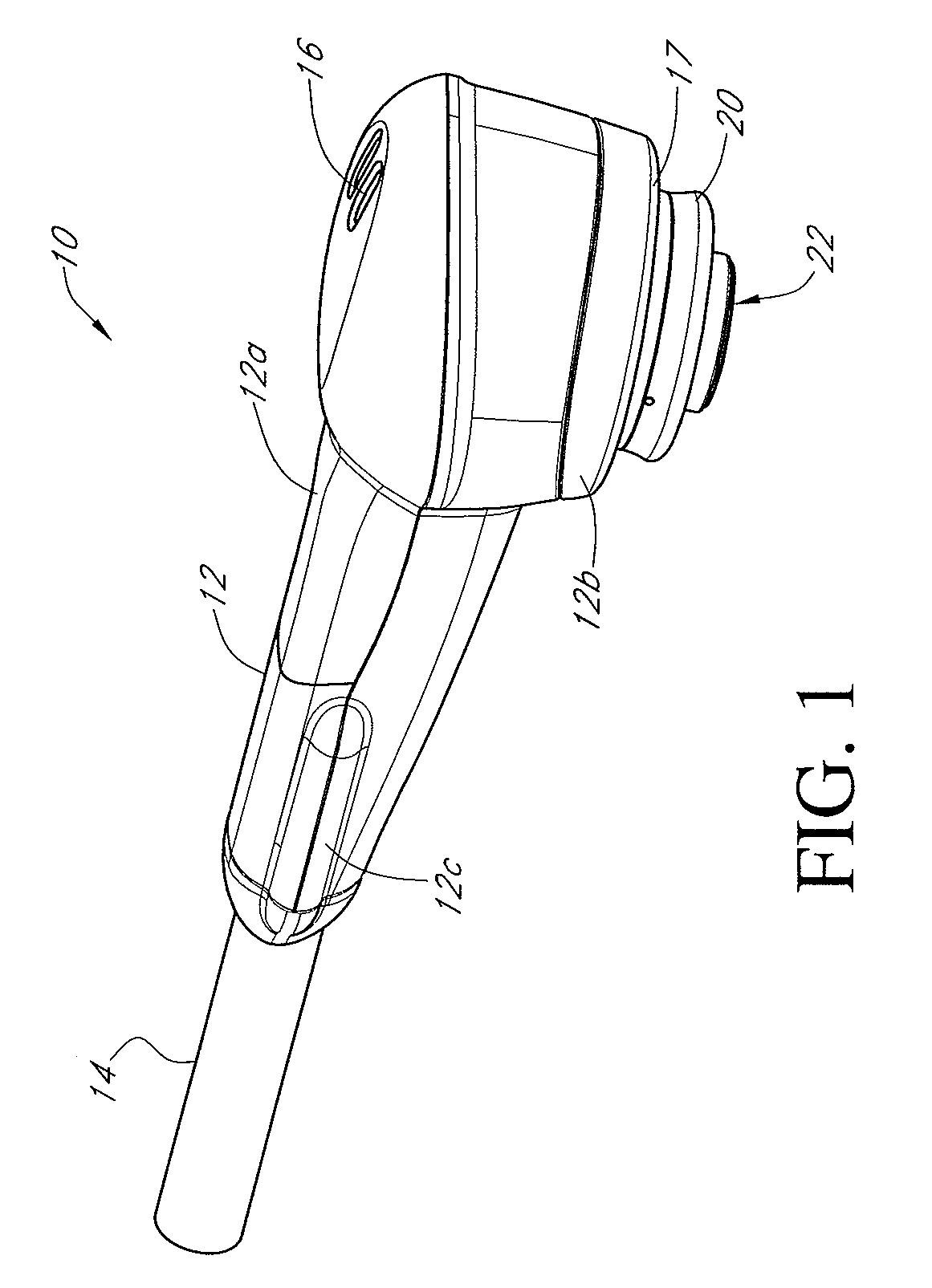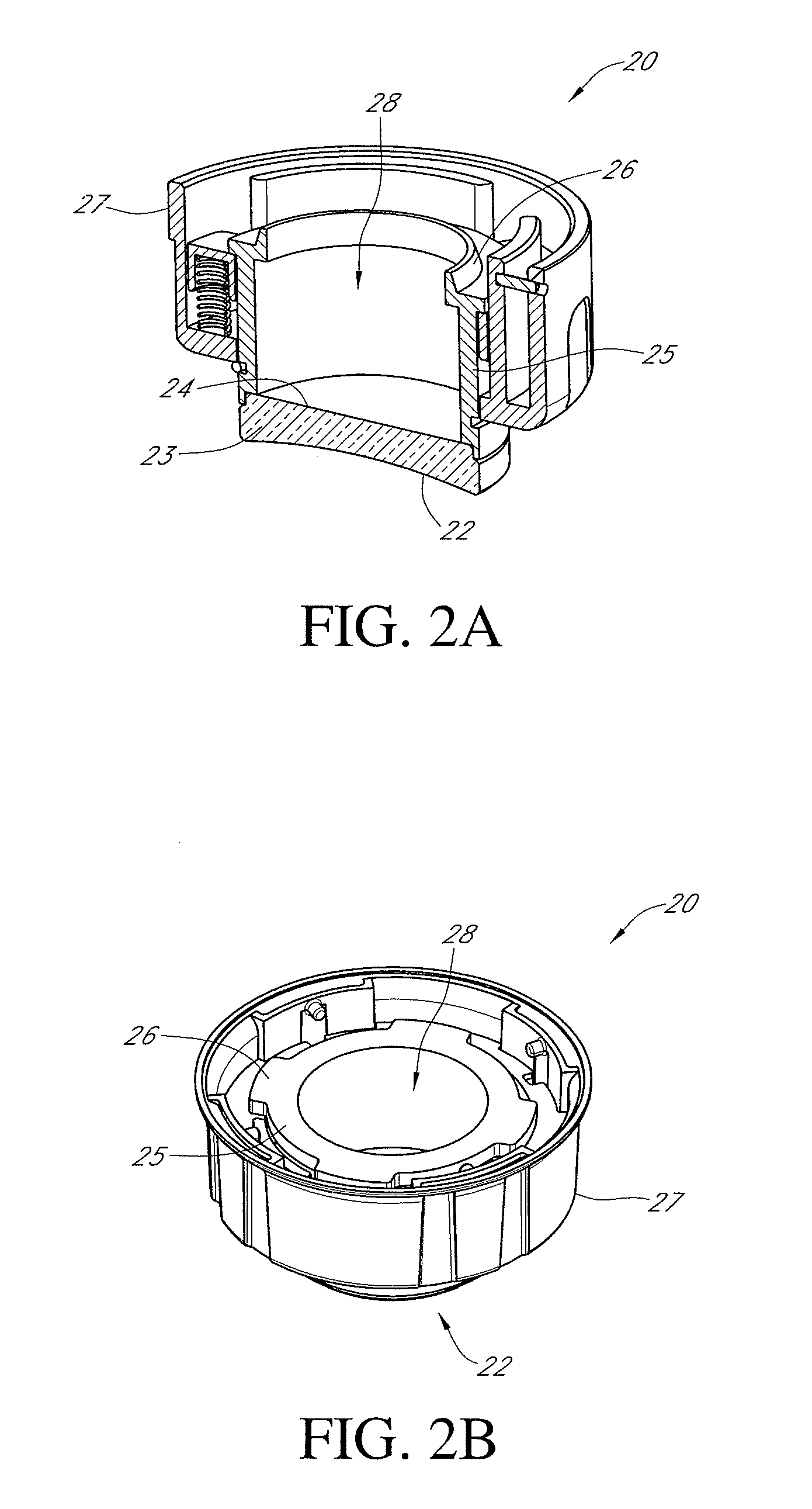Method and apparatus for irradiating a surface with pulsed light
a surface and pulsed light technology, applied in radiation therapy, therapy, therapeutic cooling, etc., can solve the problems of reducing the effect of radiation therapy, affecting the quality of life of patients, so as to enhance, restore or promote cell survival, cell function, cell function, and cell survival
- Summary
- Abstract
- Description
- Claims
- Application Information
AI Technical Summary
Benefits of technology
Problems solved by technology
Method used
Image
Examples
example wearable
Apparatus
[0195]FIG. 23 schematically illustrates an example apparatus 500 which is wearable by a patient for treating the patient's brain. The apparatus 500 comprises a body 510 and a plurality of indicators 520. The body 510 is adapted to be worn over at least a portion of the patient's scalp when the apparatus 500 is worn by the patient. The plurality of indicators 520 correspond to a plurality of treatment site location at the patient's scalp where light is to be applied to irradiate at least a portion of the patient's brain. At least one indicator 520 comprises a portion of the body which is substantially transmissive (e.g., substantially transparent or substantially translucent) to light emitted from the emission surface 22 to irradiate at least a portion of the patient's brain.
[0196]In certain embodiments, at least one of the indicators 520 denotes a position within an area of the patient's scalp corresponding to a treatment site location. In certain such embodiments, the posi...
example 1
Phototherapy Example 1
[0266]One example of phototherapy (Lampl Y, Zivin J A, Fisher M, Lew R. Welin L, Dahlof B, Borenstein P, Andersson B, Perez 1, Caparo C, Ilic S, Oron U. Infrared laser therapy for ischemic stroke: a new treatment strategy: Results of the NeuroThera Effectiveness and Safety Trial-1 (NEST-1). Stroke. 2007; 38:1843-1849, incorporated in its entirety by reference herein, suggested the safety and efficacy of transcranial light therapy (TLT) for treatment of humans 40 to 85 years of age with ischemic stroke within 24 hours of stroke onset in a small randomized, controlled trial. The NeuroThera Laser System therapeutic approach involves use of infrared laser technology and has shown significant and sustained beneficial effects in animal models of ischemic stroke.
[0267]The NeuroThera Laser System (NTS) used in this NEST-1 study utilized an infrared laser technology that involves photobiostimulation. A large and growing body of scientific literature is available documen...
example 2
Phototherapy Example 2
[0306]Another example of phototherapy (NeuroThera Effectiveness and Safety Trial-2 (NEST-2) was nearly identical to the trial study discussed above, but was larger and included patients 40 to 90 years of age. NEST-2 was a double blind, placebo (sham) controlled trial in which 660 patients were enrolled at 57 centers in 4 countries. Patients were eligible for inclusion in the study if they were 40 to 90 years of age, had a baseline NIHSS score between 7 to 22, had a clinical diagnosis of ischemic stroke, no evidence of hemorrhagic infarct by CT scan or MRI, and had not received tPA. Initiation of treatment had to occur within 24 hours after stroke onset. The inclusion and exclusion criteria are summarized in Table 8.
TABLE 8Major Inclusion and Exclusion CriteriaInclusion40-90 years of ageDiagnosis of acute ischemic stroke within 24 hours of onsetNIHSS ≧7-≦22Informed consentExclusionEvidence of intracranial, subdural, or subarachnoid hemorrhagePrestroke ≧3 mRSClin...
PUM
 Login to View More
Login to View More Abstract
Description
Claims
Application Information
 Login to View More
Login to View More - R&D
- Intellectual Property
- Life Sciences
- Materials
- Tech Scout
- Unparalleled Data Quality
- Higher Quality Content
- 60% Fewer Hallucinations
Browse by: Latest US Patents, China's latest patents, Technical Efficacy Thesaurus, Application Domain, Technology Topic, Popular Technical Reports.
© 2025 PatSnap. All rights reserved.Legal|Privacy policy|Modern Slavery Act Transparency Statement|Sitemap|About US| Contact US: help@patsnap.com



